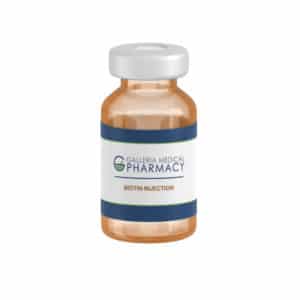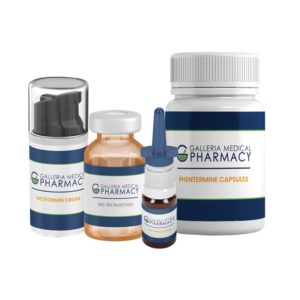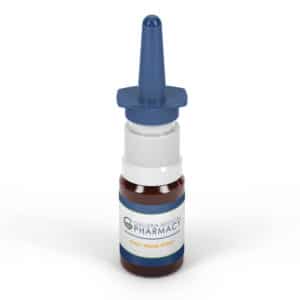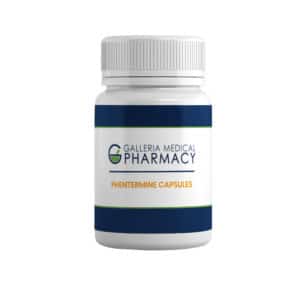MIC-B12 Injection
- Home
- /
- Products
- /
- IV Therapy
- /
- MIC-B12 Injection
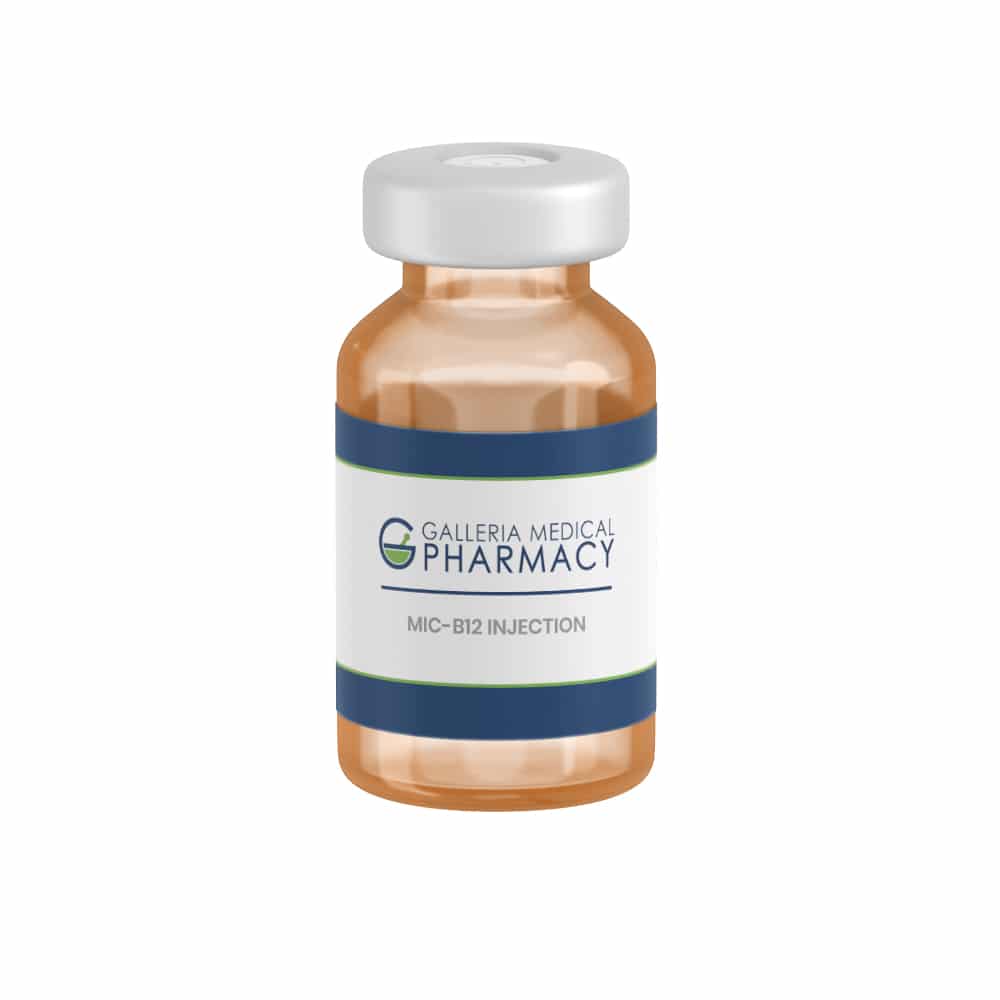
Overview
MIC is an acronym for L-Methionine, Inositol, and Choline. Methylcobalamin is the methylated form of vitamin B12. Each of the individual MIC components are called lipotropic agents. They are believed to work synergistically to help with the breakdown of fat during metabolism in the body. They have also been shown to be of benefit in the removal of fats from the liver.
While researchers recognize the role of lipotropics in fat metabolism, specifically in the liver, there is no substantial published evidence that MIC-B12 injection will help patients lose weight. Most research on the mechanics of lipotropics is very old and the majority of research was performed on rodents.1, 2, 3, 4 Nevertheless, lipotropic agents may be prescribed in combination with a healthy diet, exercise regimen, and routine counseling sessions as part of a medically-guided weight loss plan. Injections are often administered once to twice weekly by a health care provider.
Methionine
Methionine is one of nine essential amino acids, meaning it cannot be synthesized by the body and must be obtained within the diet or as a supplement. Dietary sources of methionine include meats, dairy products, spinach, potatoes, Brazil nuts, and sesame seeds.5, 6
Methionine plays a role in various processes in the body including:
- The production of L-cysteine, carnitine, adrenaline, choline, melatonin, etc.
- The production of lecithin in the liver, thereby helping to lower serum cholesterol levels and process fatty acids.
- The donation of sulfur to support the development of nails and hair growth.
- The donation of methyl groups to histones that activate certain genetic processes that may be involved in the increase in lean tissue.
- The increase in CNS activity (and therefore caloric requirements of the CNS).
- The excretion of heavy metals through chelation.
- The protection against hepatotoxins such as acetaminophen.7, 8, 9, 10
Inositol
Inositol is a sugar alcohol produced by the liver and kidneys. It was once believed to be a type of B vitamin. It is also found in beans, fruits, and peanuts. Inositol has been found to decrease fatty acid synthesis by preventing the enzymes responsible for the production of triglycerides that reside in body fat. It also acts as a second messenger for hormones such as insulin and follicle stimulating hormone.10, 11, 12, 13 Additionally, inositol may be effective in reducing insulin resistance, a condition where the body is resistant to insulin and exhibits increased body fat.14
It has been found to work synergistically with choline and displays heightened lipotropic actions than when given alone.15
Choline
Choline is a nutrient responsible for a number of metabolic pathways in the human body. While it is produced in the liver, it is still considered an essential dietary nutrient because the amount produced is not enough to meet the body’s needs. Soybeans, eggs, beef liver, cauliflower, tofu and almonds are food sources rich in choline.
Choline plays a role in various processes in the body including:
- The mobilization of fatty acids and prevention of their deposition in a given part of the body.
- The production of sphingomyelin and phosphatidylcholine (needed for cell membrane integrity).
- It is a precursor to acetylcholine, a neurotransmitter that allows communication between neurons, muscular contraction and function, and increased CNS activity.
- The modulation of gene expression and cell membrane signaling.
- Fetal brain development.15, 16, 17
Methylcobalamin
Cobalamin is another name for vitamin B12. Methylcobalamin is the methylated form of vitamin B12. Vitamin B12 is necessary for creating cellular energy as well as for making DNA. It is an essential vitamin that must be obtained from food or supplements. Dietary sources of vitamin B12 include meat, fish, milk, eggs, cheese, etc.
Vitamin B12 plays a role in various processes in the body including:
- The metabolism of fats and carbohydrates.
- The production of protein.
- Growth, cell reproduction, hematopoiesis, nucleoprotein and myelin synthesis.
- The production of methionine synthase and L-methymalonyl-CoA mutase.
- The synthesis of methionine from homocysteine.
- The regeneration of tetrahydrofolate from 5-methyltetrahydrofolate.18, 19
While vitamin B12 deficiency is rare, it can attribute to anemia, intestinal problems, and nerve damage. The elderly, vegetarians, and those with malabsorption issues are more likely to become deficient. Methylcobalamin is included in the preparation in an effort to promote the lipotropic effects of MIC and to increase the perception of well-being and energy.20
Indications
*
How Supplied
This preparation is not commercially available at this time. Patients that would benefit from its administration may be prescribed MIC-B12 injection as determined by a health care provider. The most popular formulation compounded at Galleria Medical Pharmacy is Methionine 25 mg/mL / Inositol 50 mg/mL / Choline Chloride 50 mg/mL / Methylcobalamin 1 mg/mL Injectable Solution, though other strengths and formulations may be available upon request.
For best results, MIC-B12 injection should be administered at regular intervals under professional supervision by a healthcare practitioner and in combination with a healthy diet, exercise regimen, and routine counseling sessions. As per FDA regulations, compounds prepared by a pharmacy are not intended for office use (e.g., office stock of a drug that is administered to multiple patients). As such, this preparation requires a prescription, which is then administered to the specified patient by a healthcare practitioner at their practice.
Storage
Store this medication at 36°F to 46°F (2°C to 8°C) and away from heat, moisture and light. Keep all medicine out of the reach of children. Throw away any unused medicine after the beyond use date. Do not flush unused medications or pour down a sink or drain.
Reference
- McHenry EW, Patterson JM. Lipotropic Factors. Physiological Reviews. 1944 Jan; 24(1): 128-167.
- Sellers EA, et al. The Lipotropic Factors in Experimental Cirrhosis. British Medical Journal. 1948 Jun; 1061-1065.
- Institute of Medicine (US) Committee on Military Nutrition Research; Marriott BM, editor. Food Components to Enhance Performance: An Evaluation of Potential Performance-Enhancing Food Components for Operational Rations. Washington (DC): National Academies Press (US); 1994. 19, Choline: Human Requirements and Effects on Human Performance.
- Anthony Fardet & Jean-Michel Chardigny (2013) Plant-Based Foods as a Source of Lipotropes for Human Nutrition: A Survey of In Vivo Studies, Critical Reviews in Food Science and Nutrition, 53:6, 535-590
- Lopez, M.J., Mohiuddin, S.S, “Biochemistry, Essential Amino acids”, StatPearls. April 2020. Available: https://www.ncbi.nlm.nih.gov/books/NBK557845/
- Parkhitko, A.A., Jouandin, P., Mohr, S.E., Perrimon, N.,” Methionine metabolism and methyltransferases in the regulation of aging and lifespan extension across species”, Aging Cell, vol.18 issue 6. December 2019. Available: https://www.ncbi.nlm.nih.gov/pmc/articles/PMC6826121/
- “What is methionine?”, amino acid studies. Available: https://aminoacidstudies.org/l-methionine/
- “Methionine”, Drug Bank. Available: https://go.drugbank.com/drugs/DB00134
- Best CH, Ridout JH. “The Lipotropic Action of Methionine”. Journal of Physiology. 3 Oct 1939;97:489-494.
- Young, S.N. and M. Shalchi, The effect of methionine and S-adenosylmethionine on S-adenosylmethionine levels in the rat brain. J Psychiatry Neurosci, 2005. 30(1): p. 44-8.
- Formoso, G., Baldassarre, M.P.A., Ginestra, F., Carlucci, M.A., Bucci, I., Consoli, A., “Inositol and antioxidant supplementation: Safety and efficacy in pregnancy”, Diabetes/Metabolism Research and Reviews, vol.35 issue 5. July 2019. Available: https://www.ncbi.nlm.nih.gov/pmc/articles/PMC6617769/
- Hallman, M, “Inositol During Perinatal Transition”, Neoreviews. Vol.16 issue 2. February 2015. Available: https://neoreviews.aappublications.org/content/16/2/e84
- “Inositol”, Drug Bank. Available: https://go.drugbank.com/drugs/DB13178
- Corrado, F., et al., The effect of myoinositol supplementation on insulin resistance in patients with gestational diabetes. Diabet Med, 2011. 28(8): p. 972-5.
- Gavin G, Patterson J, McHenry W. ” Comparison of the Lipotropic Effects of Choline, Inositol, and Lipocaic in Rats”. Journal of Biochemistry. 29 Jan 1943;148:275-279.
- Korsmo, H.W., “Choline: Exploring the Growing Science on its Benefits for Moms and Babies”, Nutrients, vol.11 issue 8. August 2019. Available: https://www.ncbi.nlm.nih.gov/pmc/articles/PMC6722688/#:~:text=The%20choline%20adequate%20intake%20(AI,day%20during%20lactation%20%5B3%5D.
- “Choline”, Fact Sheet for Health Professionals. Available: https://ods.od.nih.gov/factsheets/Choline-HealthProfessional/#h8
- Vasavada, A., Sanghavi, D., “Cyanocobalamin”, StatPearl. Available: https://www.ncbi.nlm.nih.gov/books/NBK555964/#:~:text=Mechanism%20of%20Action&text=Tissues%20absorb%20vitamin%20B12%20by,particularly%20in%20erythroid%20progenitor%20cells.
- “Vitamin B12 Fact Sheet for Health Professionals”, National Institutes of Health. Available: https://ods.od.nih.gov/factsheets/VitaminB12-HealthProfessional/
- Solomon L. “Disorders of cobalamin (Vitamin B12) metabolism: Emerging concepts in pathophysiology, diagnosis and treatment”. Elsevier Review. 1-15. Web.
Compounding Pharmacy Statement
This preparation is compounded with drug components whose suppliers are registered with the FDA. While Galleria Medical Pharmacy adheres to USP <797> guidelines and applicable state and federal regulations to meet the required quality standards, the statements made regarding this preparation have not been evaluated by the FDA for safety or clinical effectiveness. As such, this preparation is not intended to diagnose, treat, cure, or prevent any disease. For inquiries concerning this preparation, please contact (504) 267-9876.
